When? Where? Why? A primer on those extra high high tides that flood South Florida streets
South Florida breaks its year up into unique seasons. There’s the rainy season, hurricane season, heat season, and in the fall — king tide season.
On these highest high tides of the year, puddles of salty bay water push up through drains and manholes, flooding streets, yards and parks along the coast. Last week was one of the highest king tides in recent years, and it left some spots in South Florida impassable for low-lying cars or pedestrians hoping to keep their shoes dry.
While these tides are on a moon-based schedule and happen without fail every year, not every tide is the same. And when they’re extra high, like this week’s tide, they’re hard to ignore.
READ MORE: King tide floods offer glimpse of Miami’s soggy, salty future. Can anything be done?
Tiffany Troxler, the associate director for science at Florida International University’s Sea Level Solutions Center, said she remembers thinking “holy crap” the first time she saw the extent of king tide flooding in Miami’s Shorecrest neighborhood.
For the last eight years, Troxler has led a team of volunteer researchers to measure the depth and saltiness of king tide flooding all over South Florida during an annual event called Sea Level Solutions Day. This Saturday, 21 of the 22 teams found flooding.
“During some years, we’ll send people out to places we’ll anticipate seeing flooding and there may be a number of sites that aren’t flooded. This is probably the highest percentage of flood events we’ve seen so far,” she said.
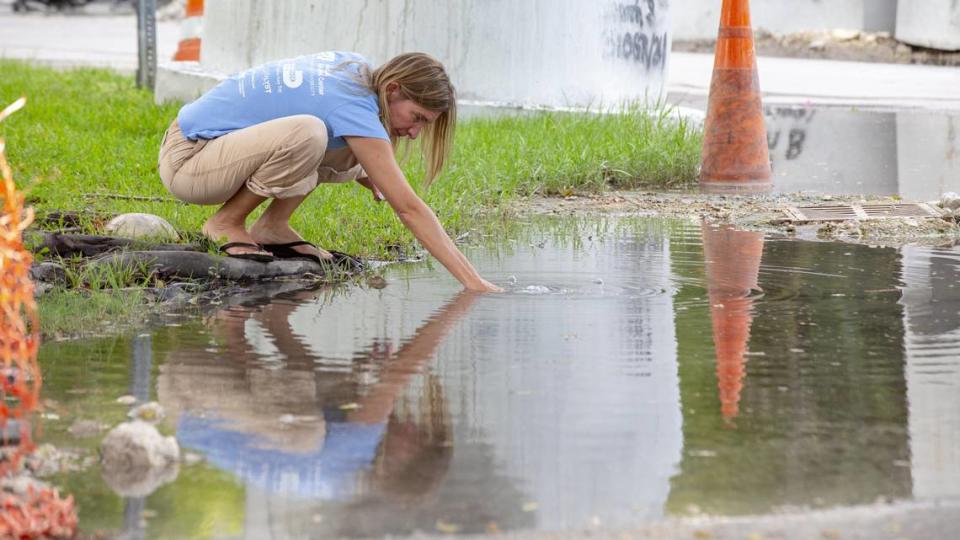
“It speaks to both our better understanding of where we think we’re going to observe flooding based on previous monitoring events, but also that this was more of a significant event.”
Here’s a primer on what causes these extra high high tides, how sea level rise affects them and what local governments are doing about them:
Are king tides normal?
Yes, a king tide is one of the highest predicted tides of the year and is a normal occurrence during new or full moons. People out at sea, like fishermen, have paid attention to these tides for many years. But in recent years, they’ve gained attention for being a window into the future of what’s to come from climate change.
Why do they happen?
Tides rise and fall based on the gravitational pull from the moon. But about once a year, the gravitational pull of the sun and the moon on the Earth line up in such a way that these normal tides are higher than usual. In South Florida, that happens in the fall, and to a lesser extent in the spring.
During that window, the tides are all a little higher. But during a full or new moon, the tides are even higher.
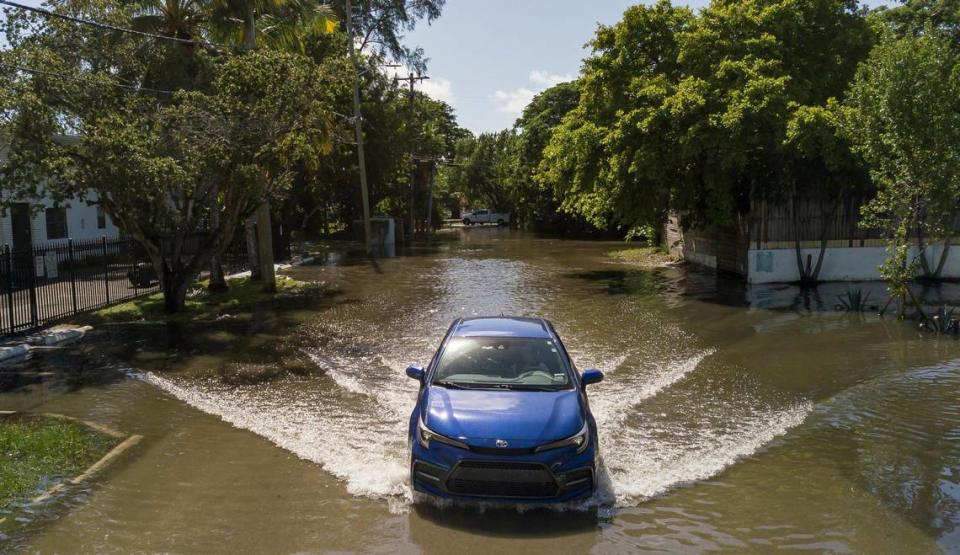
How are they predicted?
Because all of those factors are easy to predict in advance, NOAA can usually chart out which days might pose a flooding risk years in advance. In fact, the agency developed a calendar where it marks days with a higher-than-usual flood risk.
Tides are predicted by NOAA at the closest monitoring site in Virginia Key. King tide flooding in Miami-Dade was predicted for Aug. 30 to Sept. 2, the season peak Sept. 27 to Oct. 3, Oct. 15-16 and during the full moon Oct. 25-31. Each round of flooding from king tides can last two to four days.
Brian McNoldy, a senior research associate at the University of Miami Rosenstiel School of Marine, Atmospheric, and Earth Science, also created his own prediction model that includes the additional risk of sea rise, among other factors that could worsen flooding.
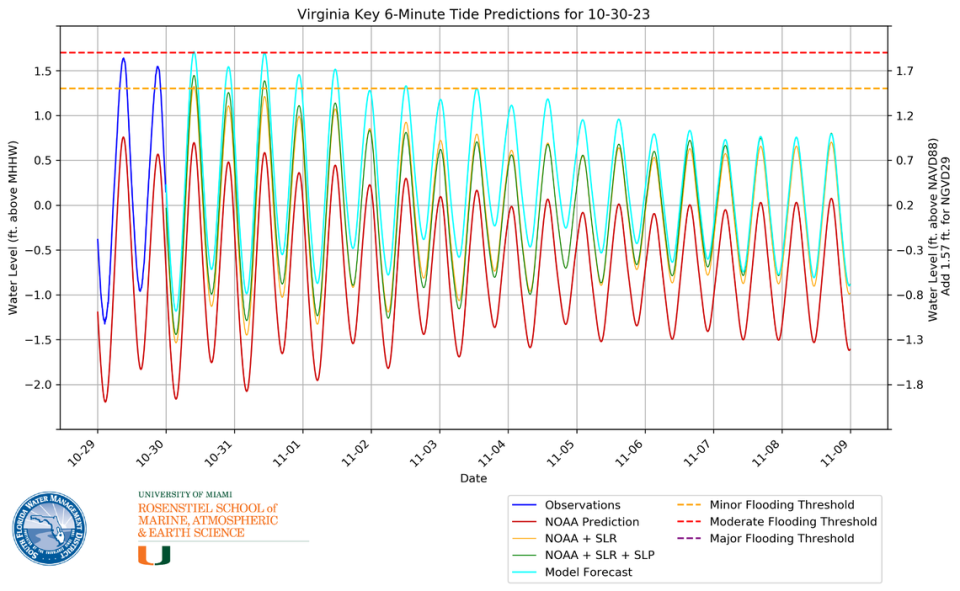
How will climate change make them worse?
Climate change is warming the world, which causes glaciers to melt, rising sea levels, and causes water itself to warm and expand. That combination had caused sea levels to rise around the globe, supercharging the king tides and regular tides.
Not all king tides cause flooding, like this week’s did. Last year, Miami only officially crossed the flooding threshold we saw this week twice. But the National Oceanic and Atmospheric Administration (NOAA) said that by 2050 it could happen as often as 50 days a year.
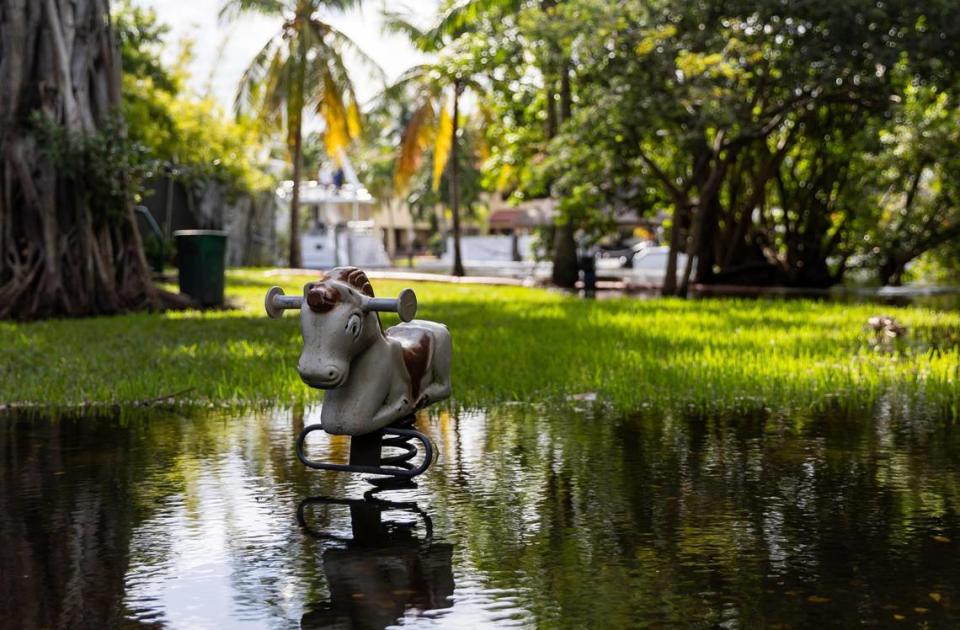
According to the Environmental Protection Agency’s king tides fact sheet “Sea level rise will make today’s king tides become the future everyday tides.”
Put another way, Monday’s high tide was about 2.75 feet above sea level. Miami is expected to see about that much sea level rise by 2060, according to NOAA’s projections.
Why are some king tides higher than others?
While NOAA can try and predict which tides will be higher than others in advance, there are plenty of factors that go into how much flooding an area could see.
Wind blowing onshore causes bigger wave heights and more water to pile up on the shore. It can also be blown away from the shore, which can reduce predicted wave heights, according to the Washington Sea Grant Research Institute.
If there’s a hurricane or tropical storm passing by (a not uncommon scenario, considering that the start of king tide season overlaps with the active tail end of hurricane season) that could push more winds and waves toward South Florida, raising tides even further.
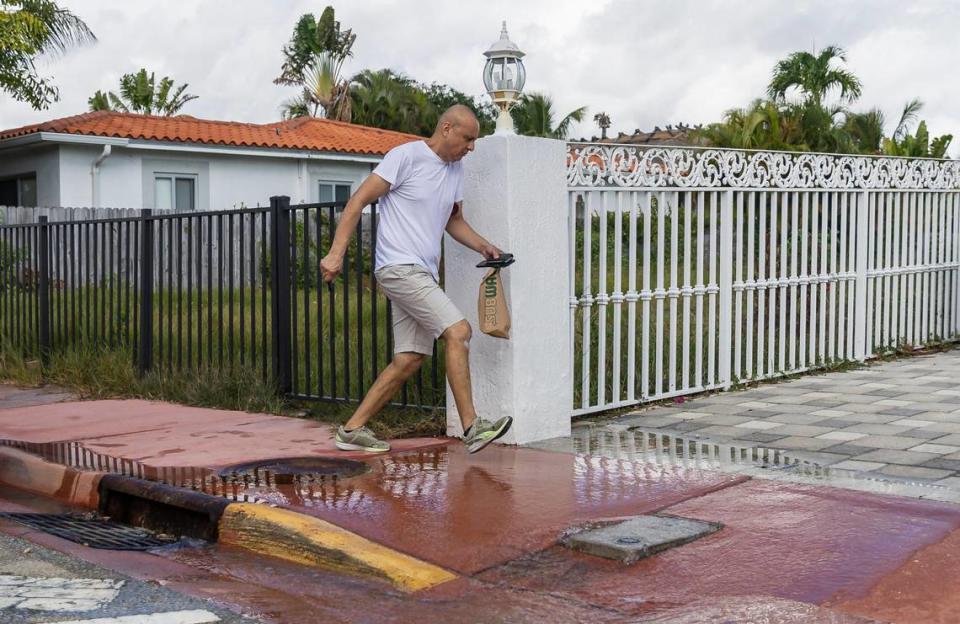
While king tides are the culprit behind a phenomenon known as “sunny day flooding,” sometimes they happen during a particularly rainy few days, which can worsen flooding. And if it’s rained for multiple days before the tides rise, the soil gets soggy, pushing groundwater levels even higher and leaving less room for any additional rain to drain.
McNoldy, with the University of Miami, also said that atmospheric pressure plays a role in how bad a flood can be. If surface pressure is high, it presses down on sea levels, keeping them a bit lower. But if surface pressures are lower, he said, water has more room to expand and flooding can get worse.
Why are they a problem?
South Florida is made up of a lot of low-lying areas near the water, and as the sea rises, king tides will reach farther and farther inland. It overwhelms storm drains, stops traffic routes and floods coastal properties.
Garbage trucks can’t reach the cans at the end of flooded streets. Healthcare or delivery vans can’t reach the doors of clients in need, and in places in the Keys that flood regularly, police officers limit their patrol routes on flooded streets to protect their cars.
Saltwater is not good for metal, including a car’s undercarriage. Experts recommend rinsing off a car if it passes through saltwater.
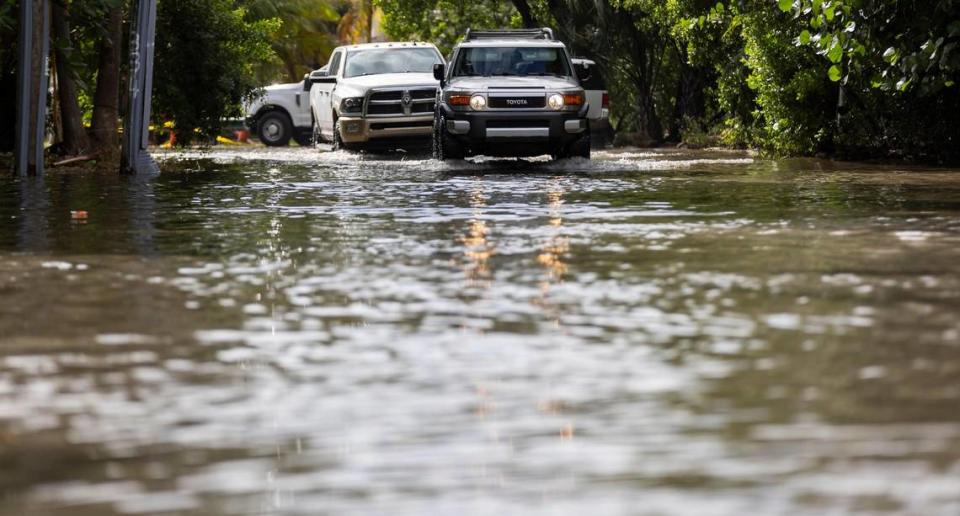
And that floodwater isn’t just salty, it’s also likely full of bacteria. Miami-Dade has tens of thousands of septic tanks along low-lying coastal areas. When water levels rise, especially in rainstorms or king tides, human waste from leaky and low-lying septic tanks seeps into those flood waters. It can sicken humans and pollute Biscayne Bay, killing fish and other sea life.
Read More: Why should you stop frolicking in Miami-Dade floodwater? It’s probably full of poop
Groundwater is also rising with the sea, so even some inland cities like Doral or Sweetwater sometimes see sunny day flooding during some king tides. Miami’s most recent citywide plan found that even with pouring $4 billion into neighborhoods by 2060, it won’t be enough to save them all. Some particularly flood-prone areas will have to replace residential neighborhoods with parks or other floodable options.
What are local governments doing about it?
When Troxler first started measuring king tide flood depths eight years ago, she said coastal cities rarely responded to the floods. Now, she said, most of the spots they regularly used to spot flooding in are either drier, or the city has placed a temporary stormwater pump in the area to help with drainage.
This year, Miami and Miami Beach each deployed temporary pumps in flooding hot spots and had vactor trucks, which vacuum up excess floodwater, patrol the city to keep it dry.
For more permanent fixes, Troxler pointed to the Miami Beach neighborhoods of Sunset Harbour, West Avenue and Alton Road, where flooding used to be far worse than it is today. In the last eight years, Miami Beach has spent tens of millions of dollars addressing tidal flooding by raising roads, installing permanent stormwater drainage pumps and increasing the size of drainage pipes.
In just four years since the Sunset Harbour road raising and drainage project was built, the city said it avoided nearly 150 floods that would have happened if the roads were lower. But road raising has also proved controversial, with some neighbors claiming the displaced floodwater now pours into their low-lying homes.
In Miami, the city has pledged nearly $200 million of its Miami Forever Bond toward drainage projects throughout the city. Several of the projects are funded and underway, including the installation of dozens of drainage valves that slow flooding and new, permanent stormwater drainage pumps in places like Brickell.
Ashley Miznazi is a climate change reporter for the Miami Herald funded by the Lynn and Louis Wolfson II Family Foundation in partnership with Journalism Funding Partners.

